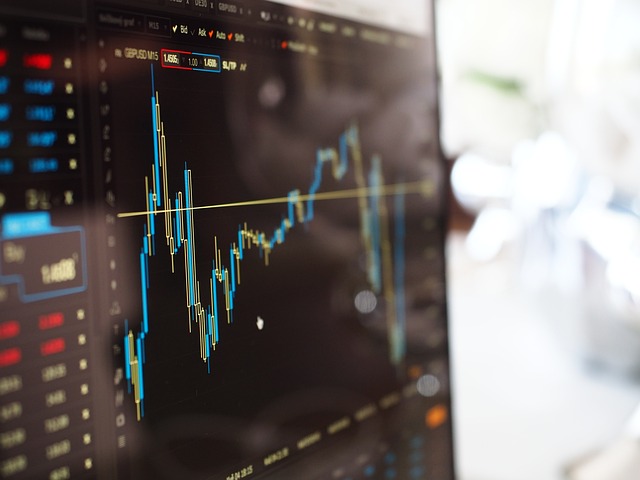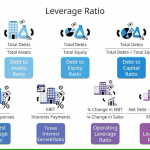Are you a savvy investor wanting to understand the ins and outs of stock buybacks? Look no further. This article will delve into the world of stock buybacks, what they mean, and why they matter.
Stock buybacks, also known as share repurchases, occur when a company purchases its own outstanding shares from the market. But why would a company buy its own shares? Well, there are a few key reasons. Firstly, it can be a way for the company to return capital to its shareholders. By buying back shares, the company is essentially distributing its excess cash to its investors, who can then choose to reinvest the funds or use them as they see fit.
Secondly, stock buybacks can help increase the earnings per share (EPS) of a company. When a company buys back its own shares, the number of outstanding shares decreases, which in turn increases the EPS. This can make the company more attractive to investors, as it signals that the company is confident in its financial position and is willing to invest in itself.
Another reason why companies engage in stock buybacks is as a strategic move to fend off potential hostile takeovers. By reducing the number of available shares on the market, the company can make it more difficult for a hostile party to acquire a controlling stake in the business. This can help the company maintain its independence and protect the interests of its existing shareholders.
Advantages and Disadvantages of Stock Buybacks
Understanding the advantages and disadvantages of stock buybacks is crucial in navigating the stock market. On the positive side, stock buybacks can be a powerful tool for companies to enhance shareholder value. By reducing the number of outstanding shares, the company can increase its EPS, which can lead to a higher stock price. This can be particularly beneficial for long-term investors who are looking to maximize their returns.
Furthermore, stock buybacks can signal to the market that the company’s management believes the stock is undervalued and that they are confident in the company’s future prospects. This can help boost investor confidence and attract new investors to the stock, further driving up the share price.
However, stock buybacks are not without their drawbacks. One potential downside is that the company may be using its cash reserves to buy back shares instead of investing in the business or paying down debt. This can be a concern for investors who are more focused on the long-term growth and sustainability of the company.
Additionally, some critics argue that stock buybacks can be used as a tool for executives to manipulate the stock price and boost their own compensation, which may not align with the best interests of shareholders. There is also a concern that stock buybacks can contribute to income inequality, as the benefits of these programs tend to accrue more to the wealthy shareholders who own the majority of the company’s stock.
How Stock Buybacks Affect Shareholders
The impact of stock buybacks on shareholders can be complex and multifaceted. On the one hand, stock buybacks can be beneficial for shareholders, as they can lead to an increase in the company’s stock price and a higher return on investment.
When a company buys back its own shares, it reduces the number of outstanding shares, which means that each remaining share represents a larger ownership stake in the company. This can result in a higher earnings per share, as the company’s profits are now divided among fewer shares. As a result, the stock price may rise, providing a boost to the value of the shareholders’ investments.
Additionally, stock buybacks can signal to the market that the company’s management believes the stock is undervalued, which can attract more investors and further drive up the share price. This can be particularly beneficial for long-term shareholders who are looking to maximize their returns over time.
However, the impact of stock buybacks on shareholders can also be negative in certain situations. For example, if a company uses its cash reserves to buy back shares instead of investing in the business or paying down debt, it may be sacrificing long-term growth and stability in favor of short-term gains. This can be a concern for shareholders who are more focused on the long-term sustainability of the company.
Additionally, as mentioned earlier, there is a concern that stock buybacks can be used by executives as a way to manipulate the stock price and boost their own compensation, which may not align with the best interests of shareholders. This can erode trust in the company’s management and lead to a decline in shareholder confidence.
Common Methods of Stock Buybacks
There are several common methods that companies can use to execute stock buybacks. One of the most straightforward approaches is for the company to simply purchase shares on the open market, just like any other investor would. This is known as an open market repurchase, and it allows the company to gradually acquire shares over time as they become available.
Another common method is for the company to make a tender offer to its shareholders, inviting them to sell their shares back to the company at a specified price. This is known as a tender offer buyback, and it allows the company to acquire a larger block of shares in a single transaction. Tender offer buybacks can be particularly attractive to shareholders who are looking to exit their positions, as the company is typically offering a premium over the current market price.
A third method of stock buybacks is known as an accelerated share repurchase (ASR). In an ASR, the company enters into an agreement with an investment bank to acquire a large block of shares upfront, with the final number of shares determined over a predetermined period of time. This can be a useful approach for companies that want to quickly reduce their outstanding share count and boost their EPS, but it can also be more expensive than other buyback methods.
Regardless of the specific method used, the key to a successful stock buyback is for the company to time the repurchases carefully and ensure that they are not overpaying for the shares. Companies that are able to buy back their shares at attractive prices can realize significant benefits for their shareholders, while those that overpay can end up destroying shareholder value.
Examples of Successful Stock Buybacks
One of the most well-known examples of a successful stock buyback is that of Apple Inc. In 2013, Apple announced a $60 billion share repurchase program, which it subsequently expanded to $100 billion in 2015. Over the course of several years, Apple used its substantial cash reserves to buy back a significant portion of its outstanding shares, reducing the total share count by over 25%.
The result of this buyback program was a significant increase in Apple’s earnings per share, which in turn drove up the company’s stock price. By the end of 2021, Apple’s stock price had increased by over 600% since the start of the buyback program, and the company had become one of the most valuable publicly traded companies in the world.
Another example of a successful stock buyback is that of Microsoft Corporation. In 2013, Microsoft announced a $40 billion share repurchase program, which it subsequently expanded to $60 billion in 2016. Over the course of several years, Microsoft used its cash reserves to buy back a significant portion of its outstanding shares, reducing the total share count by over 20%.

The result of this buyback program was a significant increase in Microsoft’s earnings per share, which in turn drove up the company’s stock price. By the end of 2021, Microsoft’s stock price had increased by over 700% since the start of the buyback program, and the company had become one of the most valuable publicly traded companies in the world.
These examples illustrate how well-executed stock buyback programs can be a powerful tool for enhancing shareholder value and driving up a company’s stock price. However, it’s important to note that not all stock buybacks are successful, and that companies need to carefully consider the timing and pricing of their repurchases to ensure that they are not overpaying for their own shares.
Criticisms and Controversies Surrounding Stock Buybacks
While stock buybacks can be a powerful tool for enhancing shareholder value, they have also been the subject of significant criticism and controversy. One of the main criticisms of stock buybacks is that they can be used by executives as a way to manipulate the stock price and boost their own compensation, rather than as a means of returning capital to shareholders.
There is a concern that some companies may use stock buybacks as a way to artificially inflate their earnings per share, which can then be used to justify higher executive bonuses and stock-based compensation. This can create a misalignment between the interests of executives and the interests of shareholders, as executives may be more focused on short-term stock price gains rather than long-term business performance.
Another criticism of stock buybacks is that they can contribute to income inequality by disproportionately benefiting the wealthiest shareholders, who tend to own the majority of a company’s stock. Critics argue that the money used to buy back shares could be better spent on employee wages, research and development, or other investments that could drive long-term growth and create more broadly shared prosperity.
There are also concerns that stock buybacks can be used as a way for companies to avoid paying taxes. By using their cash reserves to buy back shares rather than investing in the business or paying dividends, companies can effectively reduce their tax burden and keep more of their profits for themselves. This has led to calls for greater regulation and oversight of stock buyback programs to ensure that they are being used in the best interests of shareholders and the broader economy.
Despite these criticisms, however, many companies continue to use stock buybacks as a key part of their capital allocation strategies. Proponents of stock buybacks argue that they can be an effective way to return capital to shareholders and enhance long-term shareholder value, provided that they are executed thoughtfully and with the best interests of all stakeholders in mind.
Regulations and Legal Considerations for Stock Buybacks
The regulations and legal considerations surrounding stock buybacks are an important consideration for companies and investors alike. In the United States, stock buybacks are subject to a number of laws and regulations, including the Securities Exchange Act of 1934 and the Sarbanes-Oxley Act of 2002.
Under the Securities Exchange Act, companies are required to disclose their stock buyback programs and to report on the progress of these programs on a regular basis. This helps to ensure transparency and to prevent companies from engaging in insider trading or other forms of market manipulation.
The Sarbanes-Oxley Act, on the other hand, places additional restrictions on the timing and disclosure of stock buybacks. Companies are required to have a clear and well-documented process for determining the appropriate timing and pricing of their buyback programs, and they must also disclose any material information related to these programs in a timely manner.
In addition to these federal regulations, some states have also enacted their own laws and regulations related to stock buybacks. For example, some states have placed restrictions on the use of corporate funds for stock buybacks, or have required companies to obtain shareholder approval before initiating a buyback program.
It is important for companies to carefully navigate these legal and regulatory considerations when implementing a stock buyback program. Failure to comply with the relevant laws and regulations can result in significant fines, legal penalties, and reputational damage for the company and its executives.
Investors, too, need to be aware of the legal and regulatory landscape surrounding stock buybacks, as these factors can have a significant impact on the value and risk profile of a company’s stock. By understanding the regulatory environment and the potential risks and benefits of stock buybacks, investors can make more informed decisions about their investments and better protect their interests.
The Impact of Stock Buybacks on the Economy
The impact of stock buybacks on the broader economy is a topic of ongoing debate and discussion. On one hand, proponents of stock buybacks argue that they can be a positive force for the economy by returning capital to shareholders, who can then reinvest those funds in other productive activities.
When a company buys back its own shares, it is essentially distributing its excess cash to its shareholders, who can then choose to reinvest that money in other companies or use it to fund their own consumption and investment activities. This can help to stimulate economic growth and create new jobs and investment opportunities.
Additionally, some argue that stock buybacks can help to improve the overall efficiency of the capital markets by reallocating resources to their most productive uses. By buying back undervalued shares, companies can help to correct market inefficiencies and ensure that capital is directed to the most promising investment opportunities.
However, critics of stock buybacks argue that they can have negative consequences for the broader economy, particularly in terms of income inequality and the allocation of resources. They argue that the money used for stock buybacks could be better spent on employee wages, research and development, or other investments that could drive long-term growth and create more broadly shared prosperity.
There is also a concern that stock buybacks can contribute to the financialization of the economy, where companies are more focused on short-term financial engineering than on long-term productive investment. This can lead to a decline in investment in the real economy and a weakening of the country’s industrial base, with potentially negative consequences for economic growth and competitiveness.
Ultimately, the impact of stock buybacks on the broader economy is a complex and multifaceted issue, and there is no clear consensus on the net effects. As with many economic issues, the impact is likely to vary depending on the specific circumstances and the broader economic and political context.
Conclusion: The Significance of Stock Buybacks
In conclusion, stock buybacks are a complex and multifaceted financial tool that can have significant implications for companies, investors, and the broader economy. While they can be a powerful way for companies to return capital to shareholders and enhance shareholder value, they are also subject to a range of criticisms and controversies, including concerns about executive compensation, income inequality, and the allocation of resources.
As an investor, it is important to understand the ins and outs of stock buybacks and how they can impact the companies in which you invest. By staying informed about the regulatory landscape, the potential benefits and drawbacks of buyback programs, and the broader economic implications, you can make more informed investment decisions and better protect your interests.
At the same time, it is important for companies to approach stock buybacks with care and diligence, ensuring that they are being used in a way that aligns with the best interests of all stakeholders, including shareholders, employees, and the broader community. By striking the right balance and prioritizing long-term sustainability over short-term financial engineering, companies can harness the power of stock buybacks to drive growth, create value, and contribute to a more prosperous and equitable economy.
Ultimately, the significance of stock buybacks lies in their ability to shape the financial landscape and the broader economic environment. By understanding and engaging with these complex issues, investors, companies, and policymakers can work together to ensure that stock buybacks are used in a way that promotes innovation, investment, and shared prosperity for all.






